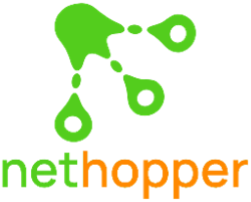Part 1: Increase Workforce Productivity with Unified Generative AI Search
- Claire C.
- May 30
- 3 min read
Updated: Aug 18
The Hidden Cost of Wasted Time
By Chris Munford, CEO & Founder, Nethopper
Introduction
If you’re like me, you are constantly searching for things at work. In fact, I just did it 5 minutes ago when searching for a prior blog to use as a template. I first searched my windows laptop, then my google drive, then my slack, then my email, then…
After 15 minutes, I had spent enough time searching and just used the best thing I found. It was just 15 minutes of my time, but I do this “search” several times a day, for almost all tasks.
The rest of my team is doing this too. I wonder what it’s costing my company?
The root of the problem is that data is distributed across all our SaaS tools.
While these SaaS tools are great for collaboration, they come at the cost of data distribution and taking the time to search several places for information.
However, there is a solution.
We’ve all experienced that GenAI (like ChatGPT) is great at searching and analyzing gobs of data, like all the world’s public data. I simply need to give all my SaaS data to generative AI, and ask it to find and summarize my data.
While public AI won’t do this (and I probably don’t want to give it my data anyway), there are new GenAI-powered search tools that will. These workplace search tools effectively ‘unify’ my data and eliminate the time it takes to search for what I want.
They can also summarize, analyze, and even create more data and content. And that could dramatically make my company more productive.
The Modern Enterprise Data Challenge
It should be no surprise that there has been explosive growth in workplace SaaS tools like Slack, Confluence, Google Drive, Salesforce, Gmail, OneDrive, Ramp, etc. There are really too many to name.
I approve the purchase for 15+ such tools at work, with a new request seemingly every month.
The thing these SaaS tools have in common is to make specific tasks easier, especially for teams of people. For example, I use Slack, and it definitely makes team communication easier.
As workers, we have many different types of tasks. And, naturally, we now have many different "SaaSes" or SaaS tools.
However, each SaaS has the unintended consequence of creating an ‘information silo.’ When I have a new task, I don’t know which SaaS ‘silo’, or ‘silos’ has the correct information.
So, I conduct a multi-SaaS search, looking for the information I need. For example, if I have 5 relevant SaaS tools across my team, then I have 5 places to search before I can begin my task.
Often, the info I need is spread across multiple SaaS tools.
Consider the hidden cost of all this searching, by everyone, for every task, on workforce productivity.
The primary cost is lost time due to searching. At the risk of getting technical, the cost here is:
Avg # Tasks per employee per day
x Avg Time (minutes) searching per task
x # employees
x 365 days per year
x Avg wage per hour
_______________________________
$ Cost of Wasted Time
For an example of a business with:
Avg # Tasks per employee per day = 3
Avg Time searching per task = 15 minutes
#employees = 500
Avg $ wage per hour = $40
Cost of Wasted Time = $5,475,000.
That’s right—searching is costing this business over $5 million per year in wasted time!
Now, consider the cost of poor search results on your business. Not all human searches are successful, and yield the latest and best information. The quality of the information found directly determines the quality of the outcome. For example, If we don’t find the right information, we’ll probably fail the task. If we don’t find the latest information, we’ll probably produce a poor result.
The impact of poor task results is hard to quantify.
Consider a simple example where a worker is trying to respond to a customer about an issue. If the worker’s search results are wrong, incomplete, or out-of-date, then the customer will be unhappy, and you might lose their business.
Unified Gen AI Search
In my next blog post, I’ll explore unified generative AI search and how it can boost employee productivity. Read Part 2 now.





